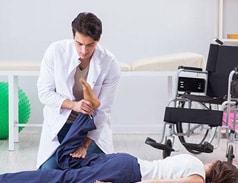This is Shelley from Miami Physio and today I want to show you a poor spine movement pattern that I call “the extensor bender”. I’m going to explain why people might bend this way, why it’s a problem and show you a test you can try on yourself.
Watch our video for a demonstration of the extensor bending movement.
So – your back is designed to bend and extend and to manage load. It’s actually really good for your back to move through a range of movements. This ensures that your muscles are frequently stretched and your joints don’t get stiff.
Why do people get into this bad pattern of movement?
My experience has been that either
- You’ve done some gym training and learnt how to “dead lift” and have continued to move like this even when your not lifting anything. Or..
- You’ve had an injury or sore back and have started moving like this as a compensation to avoid painful bending, and you’ve then continued to avoid bending, or maybe you haven’t realized that you’re still moving like this.
If you always move or bend your back whilst in active extension you’ll cause a number of issues:
- The extensor muscles in your back will be constantly working, and they’ll get tight, sore and eventually painful.
- The hyperlordotic – or increased
arch – position puts extra stress on the posterior structures of your spine.
This means you pre-dispose yourself to bony stress issues such as stress factures, pars articularis defects, posterior disc compressions and anterior stretching forces to the anterior part of the discs and the ligaments. - You’ll become reliant on the back
extensors and hip flexor muscles for spinal support whilst your core muscles
become weaker.
Your back extensors are not in the ideal position to provide support to your back, and instead increase compression forces on your spine. This poor support increases your risk of recurrence of your back injury.
If you’re worried about how you move your back, our physios can assess your back and work out a plan to get you moving better.
There’s a test you can try to see whether you have good spinal articulation, or movement throughout your spine. This is called a roll down. You shouldn’t try this if you currently have back pain. Instead come see us for a thorough assessment and treatment plan.
Watch our video to see a demonstration of a roll down.
If when you tried this test:
- you were unable to peel your back off the wall one level at a time, and instead a big chunk of your back has come away at once; or
- you were unable to get your lower back onto the wall; or
- if you know that you extensor bend and didn’t feel comfortable even testing yourself out
Book an appointment to see one of our physios, and we will thoroughly assess your back and get you on the road to normal back movement.
If you were able to slowly peel your back off the wall one level at a time – congrats, you have good spinal articulation!

